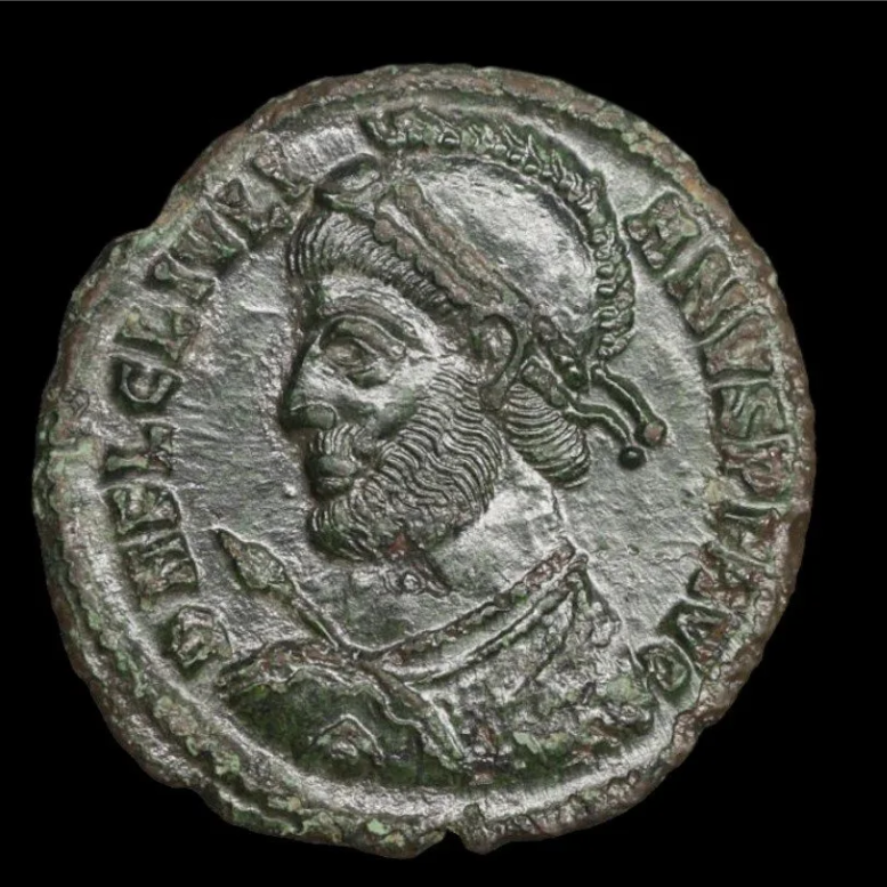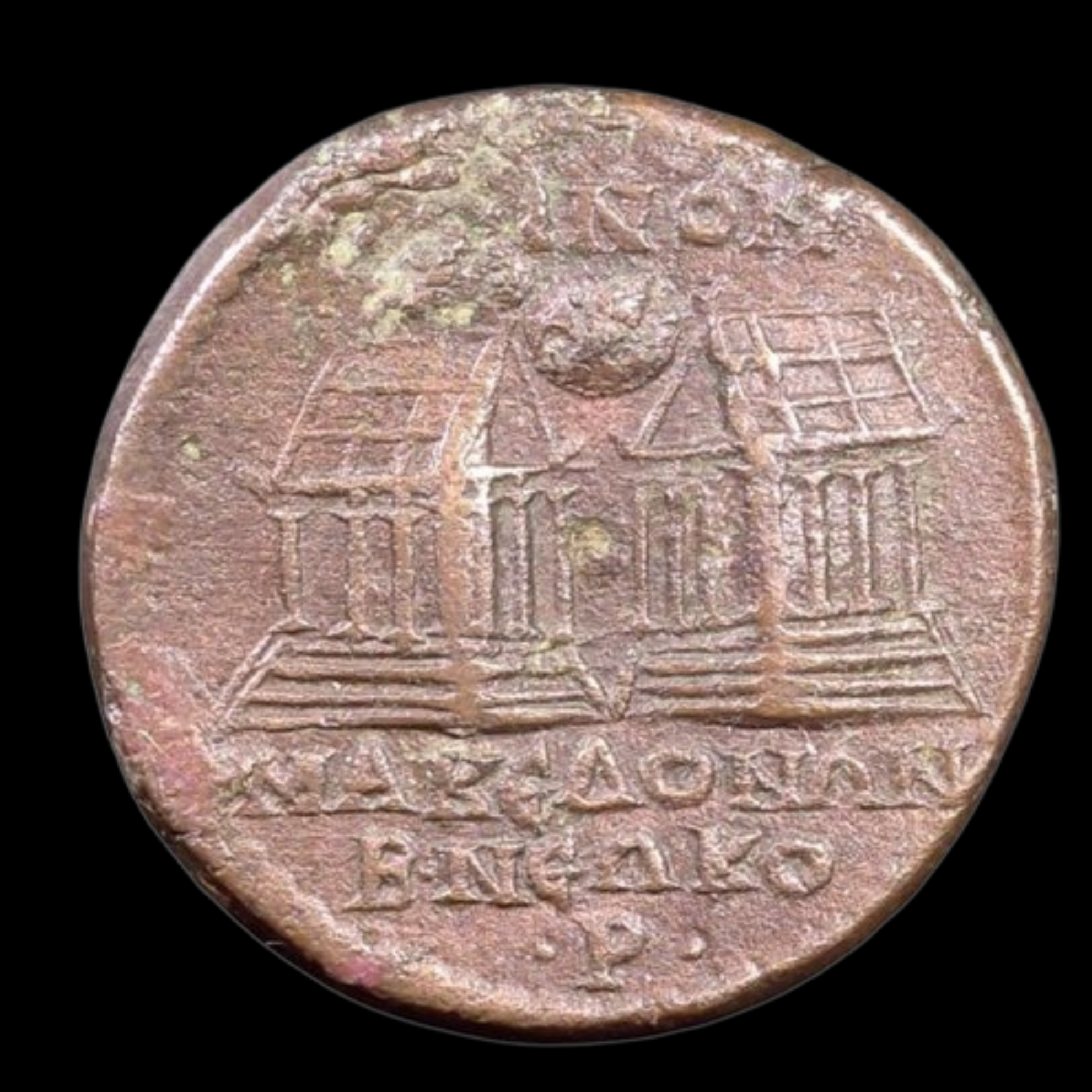 Image 1 of 5
Image 1 of 5

 Image 2 of 5
Image 2 of 5

 Image 3 of 5
Image 3 of 5

 Image 4 of 5
Image 4 of 5

 Image 5 of 5
Image 5 of 5






Roman Bronze Coin of Emperor Julian II – The Last Pagan Emperor of Rome (about 1,660–1,665 years ago), AE3 Bronze in NGC Holder
The coins shown are representative examples of the grade and type, but not the actual specimens for sale. For details on NGC’s grading standards and definitions, please refer to our NGC Grading page.
Roman AE Of Julian II (As Caesar) (AD 361-363)
Roman Bronze Coin of Emperor Julian II (As Caesar) (about 1,660-1,665 years ago)
This bronze coin was issued during the brief reign of Julian II, known to history as "Julian the Apostate," the last non-Christian emperor of Rome. A philosophical ruler whose rejection of Christianity in favor of traditional Roman religious practices earned him his pejorative nickname from Christian writers, Julian represents a fascinating counter-current to the Christianization of the late Roman Empire during the 4th century.
Coin Description:
Front side: Portrait of Julian II facing right, typically bearded (unusual for the period but reflecting his philosophical leanings), with Latin inscription giving his name and titles
Back side: Likely depicts traditional Roman religious imagery, military symbols, or personifications that aligned with Julian's Neo-Platonic and pagan beliefs
Technical Details:
Bronze composition
Denomination: AE3 or similar late Roman bronze denomination
NGC certified
Minted between 361-363 AD
Condition as certified by NGC
Historical Significance: Julian II was the last pagan emperor of Rome, whose brief reign represented the final attempt to reverse the Christianization of the empire initiated by his uncle Constantine the Great. Raised Christian but secretly converting to traditional Roman religion, Julian implemented religious tolerance policies upon becoming emperor that favored paganism. A highly educated philosopher-emperor in the tradition of Marcus Aurelius, Julian wrote extensive philosophical works still studied today. His religious policies and military campaign against Persia (modern Iran) were cut short by his death in battle in 363 AD after just 18 months as emperor, permanently ending attempts to restore traditional Roman religion as the empire's official faith.
The coins shown are representative examples of the grade and type, but not the actual specimens for sale. For details on NGC’s grading standards and definitions, please refer to our NGC Grading page.
Roman AE Of Julian II (As Caesar) (AD 361-363)
Roman Bronze Coin of Emperor Julian II (As Caesar) (about 1,660-1,665 years ago)
This bronze coin was issued during the brief reign of Julian II, known to history as "Julian the Apostate," the last non-Christian emperor of Rome. A philosophical ruler whose rejection of Christianity in favor of traditional Roman religious practices earned him his pejorative nickname from Christian writers, Julian represents a fascinating counter-current to the Christianization of the late Roman Empire during the 4th century.
Coin Description:
Front side: Portrait of Julian II facing right, typically bearded (unusual for the period but reflecting his philosophical leanings), with Latin inscription giving his name and titles
Back side: Likely depicts traditional Roman religious imagery, military symbols, or personifications that aligned with Julian's Neo-Platonic and pagan beliefs
Technical Details:
Bronze composition
Denomination: AE3 or similar late Roman bronze denomination
NGC certified
Minted between 361-363 AD
Condition as certified by NGC
Historical Significance: Julian II was the last pagan emperor of Rome, whose brief reign represented the final attempt to reverse the Christianization of the empire initiated by his uncle Constantine the Great. Raised Christian but secretly converting to traditional Roman religion, Julian implemented religious tolerance policies upon becoming emperor that favored paganism. A highly educated philosopher-emperor in the tradition of Marcus Aurelius, Julian wrote extensive philosophical works still studied today. His religious policies and military campaign against Persia (modern Iran) were cut short by his death in battle in 363 AD after just 18 months as emperor, permanently ending attempts to restore traditional Roman religion as the empire's official faith.





























